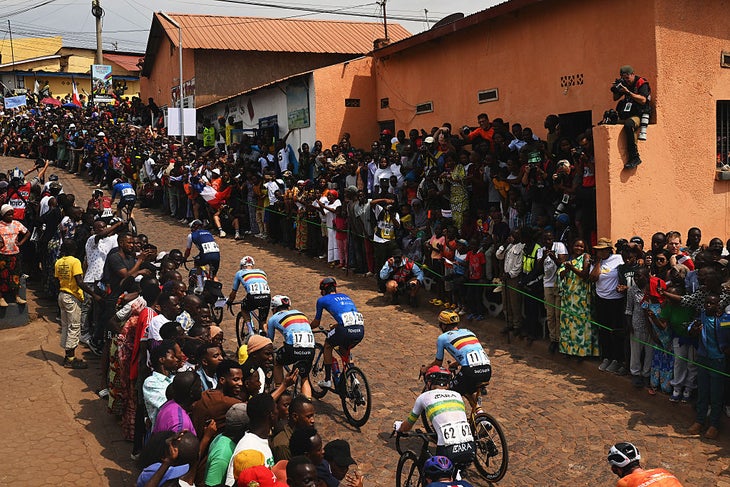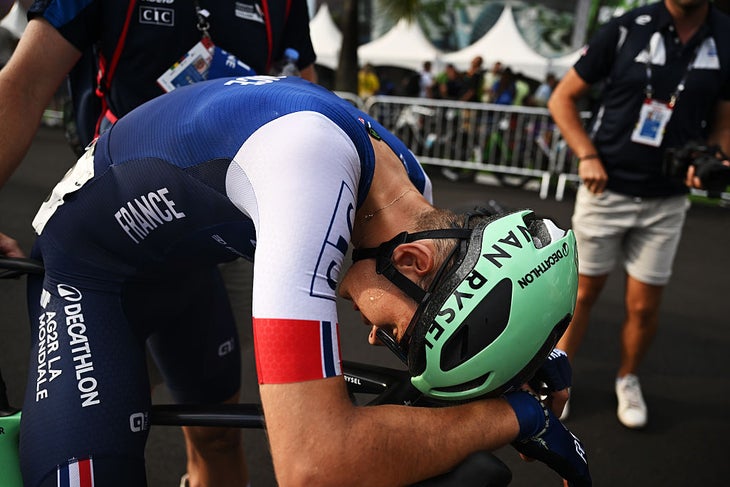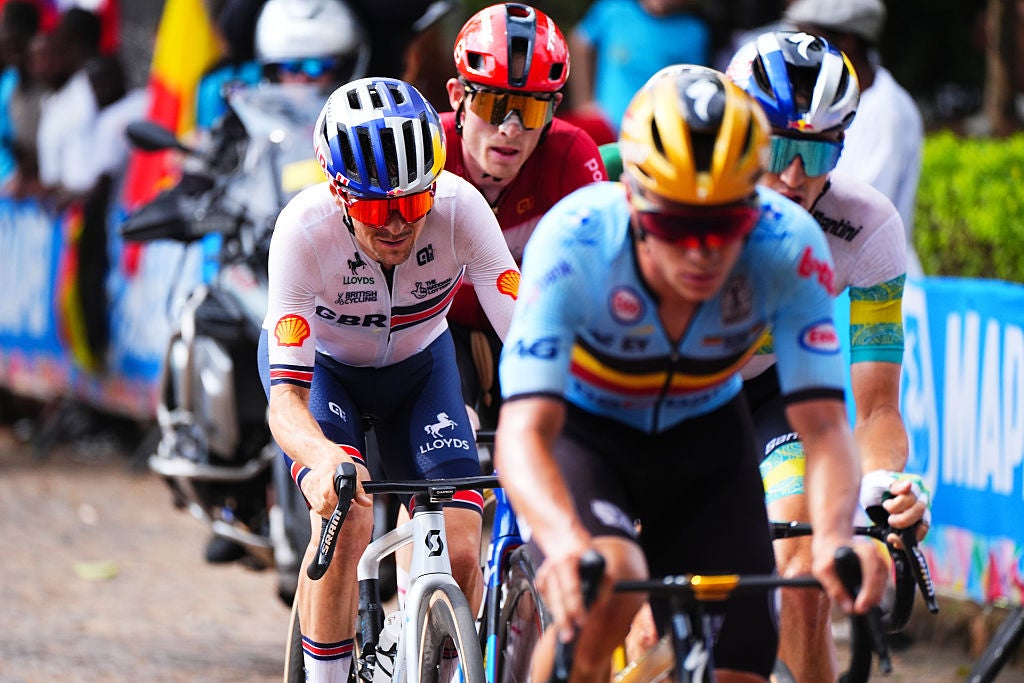‘It was survival … brutal’: Peloton stunned by cumulative impact of altitude, vert, and the Pogačar-effect in men’s road worlds.

(Photo: Zac Williams – Pool/Getty Images )
Updated September 29, 2025 06:27AM
High altitude. Huge climbing. High temperatures. Low air quality. Tadej Pogačar.
The Rwandan world championship road race was an utter sufferfest for even Tom Pidcock and the peloton’s best climbers.
“It was the most unenjoyable race of the year,” Pidcock told Eurosport at the finish Sunday. “It was so hard.
“I didn’t feel good in the start. Then I was coming round and into the race, and then I just completely blew,” Pidcock said after he chased the winning moves but faded in the crucial fifth hour.
“It was survival to the finish. There’s not much more to say. It was absolutely brutal.”
Pogačar topped a tiny results sheet Sunday afternoon in Rwanda.
Of 165 starters at the UCI’s marquee world championship road race, only 30 finished.
That’s an 82 percent dropout rate that’s not been seen since the Colombian worlds in 1995.
“It was one of the hardest days of my career, an atrocious ordeal,” Giulio Ciccone said after he led home Italia in sixth.
More than nine minutes separated world champion Pogačar and 10th-place Pidcock at the finish.
It’s a spread that’s more suited to a grand tour, and more than twice that seen at any road worlds in the modern era.
Big vert, bubbling bellies, brutal racing
 Cobbles, climbs, altitude, and smog – the Rwanda road race was no Sunday club ride. (Photo: Dario Belingheri/Getty Images)
Cobbles, climbs, altitude, and smog – the Rwanda road race was no Sunday club ride. (Photo: Dario Belingheri/Getty Images)
The carnage wasn’t totally unforecasted.
Road race courses touted to pack anywhere between 5,500 and 6,500m of climbing for the men, or 3,000 and 3,500m for the women dominated the narrative all week. A sprinkle of cobbles on the centerpiece Kimihurura climb added a further twist of spice.
Headlines of “hardest worlds of the century” duly did the rounds in the global cycling media.
Pogačar’s quest for time trial vengeance turned the anticipated pain to 11.
The course and the defending champion weren’t all the men’s peloton had to contend with Sunday.
Images from a TV camera directly next to a roadside porta-potty reinforced rumors that the Euro-centric peloton’s guts were bubbling in the Rwandan unknown. Dozens of riders dashed in to offload.
Remco Evenepoel’s widely publicised pit-stop at 160km to go was perhaps a premonition of his mechanical pandemonium to come.
And after a relatively overcast women’s race Saturday, temperatures reached 30 degrees C on Sunday.
The African sun cooked the peloton to the point that the pit zone started to resemble a field hospital.
Julian Alaphilippe was the first high-profile DNF before dozens more joined the sick and shell-shocked road worlds infirmary.
“I don’t think it was the altitude that influenced us so much as the weather,” Ciccone said. “It wore us down kilometer by kilometer.”
Not even the former grand tour winners Jai Hindley, Richard Carapaz, and Egan Bernal could stand the suffering.
Elite worlds baptism of fire for French hope Seixas
 Seixas was given a pretty gnarly present for his 19th birthday in being selected for Team France. (Photo: Dario Belingheri/Getty Images )
Seixas was given a pretty gnarly present for his 19th birthday in being selected for Team France. (Photo: Dario Belingheri/Getty Images )
If seasoned pros struggled, spare a thought for French prodigy Paul Seixas.
The waifish climber was thrown into his first elite world championship only four days after his 19th birthday, four weeks after he won the U23 kingmaker Tour de l’Avenir.
“I didn’t make the top 10, but I’m not racing against unknown riders, so no regrets. It was a level of suffering I’ve rarely experienced,” Seixas told Eurosport at the finish.
“It was probably the hardest race of my life,” he said. “I think it will help me take the next step forward.”
Seixas survived the smog, altitude, climbing, and the hyper-speed Pogačar effect to hit a lucky 13th for Team France – the best-placed finisher of the cycling super-nation.
“I’m really happy to have finished. I wanted to help the team as much as possible,” he said. “It was so tough at the finish — when you have nothing left, it’s all in the head.
“This will serve as a learning experience for the future.”
Seixas won’t be the only rider who will have Rwanda’s hills burned into their memory.
Ben Healy was the highest-placed finisher to upload his full power data to Strava.
It took a normalized power of 270 watts – or around 4.2w/kg – for the Irishman to hit third on the podium after six hours of racing. That’s while spending the whole race at around 1,500m altitude, no less.
The season-ending European championships and Italian classics will feel like coffee rides.

